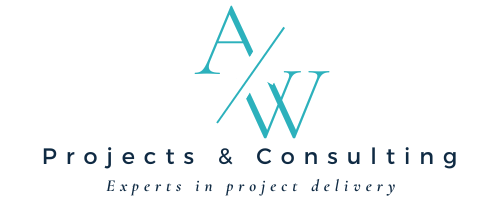Navigating Change Management and Transparency: Essential Strategies for Modern Projects
In the rapidly evolving landscape of project management, the importance of change management and transparency is increasingly recognized as a cornerstone of successful project execution. As organizations face constant shifts in market conditions, technologies, and business processes, managing change effectively and maintaining transparency are crucial for achieving project success and ensuring stakeholder buy-in. This article delves into why change management and transparency are becoming more critical, and offers practical strategies for managing these aspects effectively.
Understanding the Growing Importance of Change Management and Transparency
1. The Increasing Pace of Change:
- Frequent Changes: Organizations are experiencing more frequent changes due to technological advancements, market dynamics, and evolving customer expectations. Projects are now often required to adapt swiftly to these changes.
- Adaptability: Effective change management ensures that projects can accommodate changes without disrupting progress or compromising outcomes.
2. The Demand for Accountability and Trust:
- Stakeholder Expectations: In an era where stakeholders demand greater accountability and visibility, transparency in project processes and decision-making is crucial. It builds trust and ensures that stakeholders are informed and engaged.
- Reputation Management: Transparency helps in managing organizational reputation by demonstrating a commitment to open communication and ethical practices.
Benefits of Effective Change Management and Transparency
1. Enhanced Project Success Rates:
- Smooth Transitions: Proper change management helps in managing transitions smoothly, reducing resistance, and ensuring that changes are implemented effectively. This leads to higher success rates and better project outcomes.
- Reduced Disruptions: Transparent communication about changes minimizes disruptions by keeping all stakeholders informed and prepared for adjustments.
2. Improved Stakeholder Engagement:
- Trust Building: Transparency fosters trust among stakeholders by providing clear information about project status, decisions, and changes. This engagement leads to greater support and collaboration.
- Feedback Integration: Effective change management involves stakeholders in the change process, allowing their feedback to be incorporated and enhancing their commitment to the project.
3. Increased Team Morale and Productivity:
- Clear Direction: Transparent communication provides team members with a clear understanding of project goals, changes, and expectations. This clarity boosts morale and productivity by reducing uncertainty and confusion.
- Involvement: Involving the team in change management processes helps in addressing concerns, building buy-in, and fostering a collaborative work environment.
4. Better Risk Management:
- Early Identification: Transparent communication helps in identifying potential risks related to changes early on. This allows for proactive risk management and mitigation strategies.
- Adaptability: Effective change management enables teams to adapt to changes swiftly, minimizing the impact of unforeseen issues and ensuring project continuity.
Strategies for Managing Change and Ensuring Transparency
1. Develop a Comprehensive Change Management Plan:
- Tip: Create a detailed change management plan that outlines the processes, roles, responsibilities, and communication strategies for managing change. Include steps for assessing, approving, and implementing changes.
- Components: The plan should address how changes will be communicated, how resistance will be managed, and how the impact of changes will be evaluated.
2. Communicate Transparently and Frequently:
- Tip: Establish regular communication channels to provide updates on project status, changes, and decisions. Use various communication methods such as meetings, emails, and dashboards to reach all stakeholders.
- Openness: Be open about project challenges, changes, and decisions. Provide clear explanations and context to ensure that stakeholders understand the reasons behind changes and their implications.
3. Engage Stakeholders Early and Often:
- Tip: Involve stakeholders in the change management process from the outset. Seek their input on proposed changes, address their concerns, and keep them informed about the impact of changes on project objectives.
- Feedback Loop: Create mechanisms for stakeholders to provide feedback and voice concerns. Incorporate their input into the change management process to enhance engagement and support.
4. Train and Support Your Team:
- Tip: Provide training and support to team members on change management processes and tools. Ensure they understand how to manage changes effectively and adapt to new processes or technologies.
- Resources: Offer resources such as workshops, guides, and FAQs to help team members navigate changes and stay informed.
5. Monitor and Evaluate Change Impact:
- Tip: Continuously monitor the impact of changes on project performance, timelines, and outcomes. Evaluate whether changes are achieving the desired benefits and make adjustments as needed.
- Metrics: Use key performance indicators (KPIs) and other metrics to assess the effectiveness of change management and transparency efforts. Adjust strategies based on data and feedback.
6. Foster a Culture of Transparency:
- Tip: Promote a culture of transparency within the organization by encouraging open communication, sharing information, and being accountable for decisions. Lead by example and reinforce the importance of transparency in all project activities.
- Values: Integrate transparency into organizational values and practices to ensure that it becomes a fundamental aspect of project management and organizational culture.
7. Address Resistance to Change:
- Tip: Identify potential sources of resistance early and address them proactively. Provide support and resources to help team members adapt to changes and overcome any challenges.
- Support: Offer counseling, coaching, or additional training to individuals or teams struggling with change. Address concerns and provide reassurance to facilitate smoother transitions.
Conclusion
As the business environment continues to evolve, the importance of effective change management and transparency cannot be overstated. By developing comprehensive change management plans, communicating transparently, engaging stakeholders, and fostering a culture of openness, project managers can navigate change successfully and build trust with stakeholders. Embracing these practices not only enhances project success rates but also improves stakeholder engagement, team morale, and overall project outcomes. In an era where adaptability and transparency are key to organizational success, mastering change management and transparency is essential for achieving long-term project success and sustaining competitive advantage.







